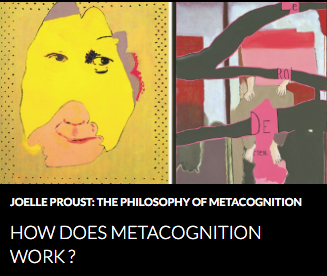FOCUS
Appointments and grant at the DEC
 Yves Boubenec has been
appointed assistant professor of experimental neuroscience. He will be affiliated to the Laboratoire des Systèmes Perceptifs (LSP). Yves Boubenec was trained in
neuroscience (PhD from the Unité de Neurosciences Information et Complexité, Gif-sur-Yvette). His research focuses on the way behavioral context can cause
changes in the cerebral representation of sounds. A related research topic is that of decision making based on statistics drawn from a flow of continuous
acoustic input.
Yves Boubenec has been
appointed assistant professor of experimental neuroscience. He will be affiliated to the Laboratoire des Systèmes Perceptifs (LSP). Yves Boubenec was trained in
neuroscience (PhD from the Unité de Neurosciences Information et Complexité, Gif-sur-Yvette). His research focuses on the way behavioral context can cause
changes in the cerebral representation of sounds. A related research topic is that of decision making based on statistics drawn from a flow of continuous
acoustic input.
 Maria Giavazzi
has been appointed assistant professor of the neuropsychology of language. She will be affiliated to the team NeuroPsychologie Interventionnelle (NPI). Maria Giavazzi is
a linguist by training (PhD from MIT). Her research follows two main axes: first, the interaction between phonological grammar and general
principles governing speech perception and production, and second, the interaction between grammatical knowledge and executive functions by coupling research on
healthy participants with research on patients suffering from a progressive deterioration of their linguistic capacity.
Maria Giavazzi
has been appointed assistant professor of the neuropsychology of language. She will be affiliated to the team NeuroPsychologie Interventionnelle (NPI). Maria Giavazzi is
a linguist by training (PhD from MIT). Her research follows two main axes: first, the interaction between phonological grammar and general
principles governing speech perception and production, and second, the interaction between grammatical knowledge and executive functions by coupling research on
healthy participants with research on patients suffering from a progressive deterioration of their linguistic capacity.
 Salvador Mascarenhas has been
recruited as assistant professor of linguistics. Affiliated to the Institut Jean Nicod, in the Linguae team, he will be responsible for the linguistic curriculum. His initial training
was in theoretical linguistics (PhD from NYU). His research is situated at the interface between semantics, pragmatics, and the psychology of reasoning.
Salvador Mascarenhas has been
recruited as assistant professor of linguistics. Affiliated to the Institut Jean Nicod, in the Linguae team, he will be responsible for the linguistic curriculum. His initial training
was in theoretical linguistics (PhD from NYU). His research is situated at the interface between semantics, pragmatics, and the psychology of reasoning.
Yves Boubenec, Maria Giavazzi, et Salvador Mascarenhas will join the facuty in September 2016.
 Nicolas Baumard -
CNRS researcher, member of the Institut Jean Nicod, and co-director of the Evolution and Social Cognition
team with Coralie Chevallier - has been appointed adjunct associate professor at the ENS. He will take on this role next September.
Nicolas Baumard -
CNRS researcher, member of the Institut Jean Nicod, and co-director of the Evolution and Social Cognition
team with Coralie Chevallier - has been appointed adjunct associate professor at the ENS. He will take on this role next September.
 Finally, Shihab Shamma,
researcher at the Laboratoire des Systèmes Perceptifs (LSP) has obtained an excellency professorship from PSL.
Shihab Shamma works on the neural correlates of short-term auditory memory and contextual effects on speech processing, tone quality discrimination, and rapid learning of temporal patterns.
Finally, Shihab Shamma,
researcher at the Laboratoire des Systèmes Perceptifs (LSP) has obtained an excellency professorship from PSL.
Shihab Shamma works on the neural correlates of short-term auditory memory and contextual effects on speech processing, tone quality discrimination, and rapid learning of temporal patterns.
IN THE MEDIA
Etienne Koechlin on France Inter with Christian Clot discussing the scientific expedition "Adaptation"
 On June 24, Etienne Koechlin was invited on Mathieu Vidard's France Inter show La Tête au Carré,
along with Christian Clot, to talk about the scientific expedition "Adaptation".
.
On June 24, Etienne Koechlin was invited on Mathieu Vidard's France Inter show La Tête au Carré,
along with Christian Clot, to talk about the scientific expedition "Adaptation".
.
The project "Adaptation 4x30J" is a series of explorations in extreme regions led by the explorer Christian Clot in order to better
understand the human capacity of adaptation to change, both from a cognitive and a physiological point of view.
This project is led in partnership with a series of labs and with a research team, made up of Katia Dauchot and Margaux Romand-Monnier
is led by Etienne Koechlin (director of the Laboratoire de Neurosciences Cognitives (LNC)). Katia Dauchot is a specialist in humans'reaction
to stress and fear management. She focuses specifically on motivation. Her role will be to handle the experiments
related to stress levels in extreme conditions. Margaux Romand-Monnier is a doctoral student in cognitive neuroscience who works on the links
between different neural systems and how they adapt in response to the environment.
To conduct these studies, a series of expeditions will be carried out in four of the most extreme places on the planet: Hot/dry in the summer of the
Dasht-e-Lut desert of Iran; cold/wet in the Patagonian channels at the end of winter; hot/wet in the Amazonian rainforest at the beginning of
fall; cold/dry in the harsh winter of eastern Siberia. Starting in August 2016, Christian Clot will spend 30 consecutive days traversing each
of these unusual places, with a 10 days' break in between trips.
In 2017, he will bring a group of 20 people, 10 women and 10 men, to perform the same expedition, in order to carry out the studies.
The goal is to conduct a series of cognitive and physiological experiments during the trips, including testing decision making, adaptability,
motivation, collaboration, leadership, and risk management.
Podcast here
More information about the project "Adaptation 4x30J"
Joelle Proust writes an invited post on John Schwenkler’s blog



Click on the images
The Brains Blog is a leading forum for work in the philosophy and science of mind.
AUDIO / VIDEO
Yann LeCun, "Is machine learning a good model of human learning ?"
 The audio recording of Yann LeCun’s conference in the department’s
Colloquium series from April 5th is now online on the Savoirs ENS website. Yann LeCunn is professor of Digital Technology at the Collège de France
(2015-2016) and director of the Facebook center for artificial intelligence (AI).
The audio recording of Yann LeCun’s conference in the department’s
Colloquium series from April 5th is now online on the Savoirs ENS website. Yann LeCunn is professor of Digital Technology at the Collège de France
(2015-2016) and director of the Facebook center for artificial intelligence (AI).
Workshop DIVIDNORM 2016

The DIVIDNORM workshop on Metacognitive diversity across culture: advances and perspectives which took place between May 31st and June 1st is
available on vimeo.
Learn more about the Dividnorm workshop.
IN BRIEF
#barbarplots, mission accomplished !

The #barbarplots Kickstarter initiative reached its financing goal and will now officially begin the campaign against bar plots.
In 30 days, 173 investors pledged their support to the tune of 3,479€, money that will be used to send t-shirts with the campaign’s
primary meme to the editors of major scientific journals. This campaign has triggered a large amount of reactions and discussions
on social media and the movement has spread worldwide.
Read about the campaign
Learn more about the reactions
people have had to the campaign
SOME RECENT PUBLICATIONS
Thomas Andrillon, Andreas Trier Poulsen, Lars Kai Hansen, Damien Léger, and Sid Kouider, (June 15, 2016),
Neural Markers of Responsiveness to the Environment in Human Sleep, The Journal of Neuroscience
Abstract :
Sleep is characterized by a loss of behavioral responsiveness. However, recent research has shown that the sleeping brain is not completely disconnected
from its environment. How neural activity constrains the ability to process sensory information while asleep is yet unclear. Here, we instructed human
volunteers to classify words with lateralized hand responses while falling asleep. Using an electroencephalographic (EEG) marker of motor preparation,
we show how responsiveness is modulated across sleep. These modulations are tracked using classic event-related potential analyses complemented by
Lempel-Ziv complexity (LZc), a measure shown to track arousal in sleep and anesthesia. Neural activity related to the semantic content of stimuli was
conserved in light non-rapid eye movement (NREM) sleep. However, these processes were suppressed in deep NREM sleep and, importantly, also in REM sleep,
despite the recovery of wake-like neural activity in the latter. In NREM sleep, sensory activations were counterbalanced by evoked down states, which,
when present, blocked further processing of external information. In addition, responsiveness markers correlated positively with baseline complexity,
which could be related to modulation in sleep depth. In REM sleep, however, this relationship was reversed. We therefore propose that, in REM sleep,
endogenously generated processes compete with the processing of external input. Sleep can thus be seen as a self-regulated process in which external
information can be processed in lighter stages but suppressed in deeper stages. Last, our results suggest drastically different gating mechanisms in
NREM and REM sleep.
Ngon, C. & S. Peperkamp (2016), What infants know about the unsaid: Phonological categorization in the absence of auditory input. Cognition, 152, 53-60.
Abstract: Acquiring a lexicon constitutes an essential step in early language development. From an early age on, infants store words with well-specified phonological representations, and they can spontaneously activate these representations on the basis of visual information only (Mani & Plunkett, 2010a, 2011). To what extent can infants inspect and categorize phonological representations in the absence of auditory input? The present study focuses on words that infants comprehend but do not attempt to pronounce yet, and introduces a novel methodology based on anticipatory eye-movements. In two experiments, 21-month-old French-learning infants were silently presented with images of familiar objects whose labels they comprehended but did not pronounce yet. We tested whether they could activate the phonological representation of these labels and categorize them based on their length. Infants' performance exceeded chance when the target words were mono- and trisyllabic, but not when they were mono- and disyllabic. Thus, even in the absence of auditory input infants can activate the phonological representation of words they do not pronounce yet, and use this representation to perform a categorization based on word length, provided the length difference is substantial.
Stefano Palminteri, Emma J. Kilford, Giorgio Coricelli, Sarah-Jayne Blakemore (2016, June 20),
The Computational Development of Reinforcement Learning during Adolescence, PLOS Computational Biology.
Abstract:
Adolescence is a period of life characterised by changes in learning and decision-making. Learning and decision-making do not rely on a unitary system,
but instead require the coordination of different cognitive processes that can be mathematically formalised as dissociable computational modules.
Here, we aimed to trace the developmental time-course of the computational modules responsible for learning from reward or punishment, and learning
from counterfactual feedback. Adolescents and adults carried out a novel reinforcement learning paradigm in which participants learned the
association between cues and probabilistic outcomes, where the outcomes differed in valence (reward versus punishment) and feedback was either
partial or complete (either the outcome of the chosen option only, or the outcomes of both the chosen and unchosen option, were displayed).
Computational strategies changed during development: whereas adolescents’ behaviour was better explained by a basic reinforcement learning
algorithm, adults’ behaviour integrated increasingly complex computational features, namely a counterfactual learning module (enabling enhanced
performance in the presence of complete feedback) and a value contextualisation module (enabling symmetrical reward and punishment learning).
Unlike adults, adolescent performance did not benefit from counterfactual (complete) feedback. In addition, while adults learned symmetrically
from both reward and punishment, adolescents learned from reward but were less likely to learn from punishment. This tendency to rely on rewards
and not to consider alternative consequences of actions might contribute to our understanding of decision-making in adolescence.
Philippe Schlenker, Emmanuel Chemla, Cristiane Cäsar, Robin Ryder, Klaus Zuberbühler (2016),
Titi semantics: Context and meaning in Titi monkey call sequences, Natural Language & Linguistic Theory
Abstract :
Cäsar et al. (2013) show that the structure of Titi monkey call sequences can, with just two call types (A and B),
reflect information about predator type and predator location. Using the general methods of Schlenker et al. (2014, 2016, to appear),
we ask what these observations show about the ‘linguistic’ structure of Titi calls. We first demonstrate that the simplest behavioral
assumptions make it challenging to provide lexical specifications for A- and B-calls: B-calls rather clearly have the distribution of
highly underspecified calls; but A-calls are also found in highly heterogeneous contexts (e.g. they are triggered by ‘cat in the canopy’
and ‘raptor on the ground’ situations). We discuss two possible solutions to the problem. One posits that entire sequences are endowed
with meanings that are not compositionally derived from their individual parts (a related idea was proposed by Arnold and Zuberbühler
to analyze pyow-hack sequences in Putty-nosed monkeys). The second solution, which we consider to be superior, takes sequences to have
no structure besides concatenation: the B-call is a general call, the A-call is used for serious non-ground threats, and each call reflects
information about the environment at the time at which it is uttered. The composition of Cäsar et al.’s sequences is seen to follow from
the interaction between call meaning, rules of competition among calls, and more sophisticated assumptions about the environmental context.
In the end, a detailed analysis of the division of labor between semantics, pragmatics and the environmental context yields a simple and
explanatory analysis of sequences that initially seemed to display a complex mapping between syntax and semantics.
Benjamin Spector (2016),
Comparing exhaustivity operators, Semantics and Pragmatics
Abstract :
In this paper, I investigate the formal relationships between two types of exhaustivity operators that have been discussed
in the literature, one based on minimal worlds/models, noted exh-mw (van Rooij & Schulz 2004, Schulz & van Rooij 2006,
Spector 2003, 2006, with roots in Szabolcsi 1983, Groenendijk & Stokhof 1984), and one based on the notion of innocent
exclusion, noted exh-ie (Fox 2007). Among others, I prove that whenever the set of alternatives relative to which
exhaustification takes place is semantically closed under conjunction, the two operators are necessarily equivalent.
Together with other results, this provides a method to simplify, in some cases, the computation associated with exh-ie,
and, in particular, to drastically reduce the number of alternatives to be considered.
Besides their practical relevance, these results clarify the formal relationships between both types of operators.
